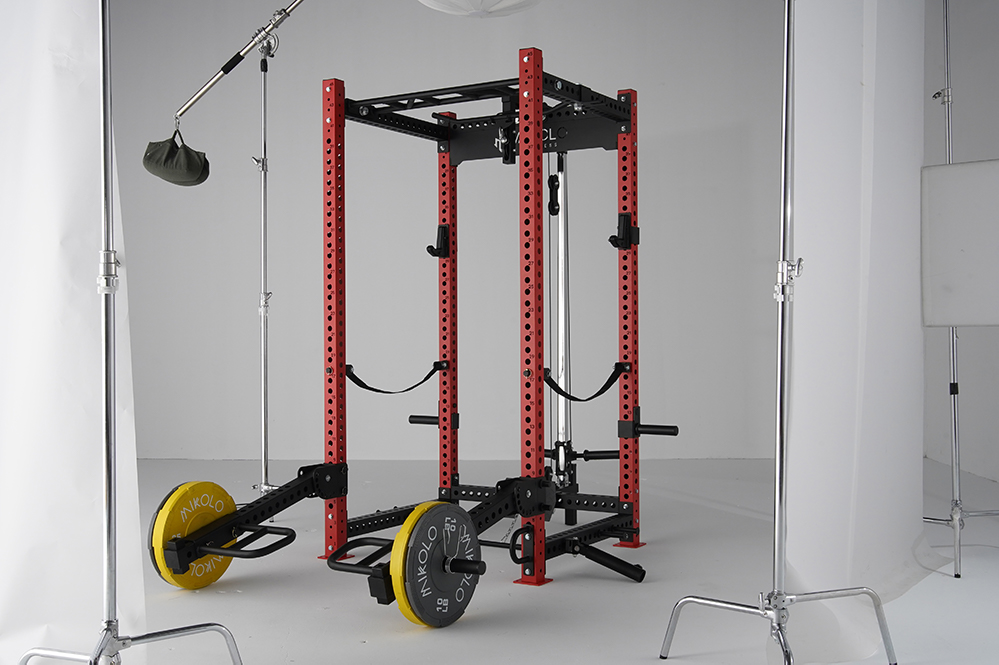A power rack, also known as a squat rack or power cage, is a versatile piece of fitness equipment designed to enhance your strength training regimen. Whether you’re a seasoned lifter or a beginner, incorporating a power rack into your workout routine can provide significant benefits. In this comprehensive guide, we’ll delve into the advantages of power racks, explore the different types available, and highlight key features to consider when purchasing one.
Benefits of Using a Power Rack
1. Enhanced Safety
One of the primary benefits of a power rack is the increased safety it offers during heavy lifts. The adjustable safety bars catch the weight if you fail to complete a lift, preventing injuries. This is particularly beneficial for exercises like squats and bench presses. Knowing that you have a safety net allows you to push your limits and lift heavier weights without the constant fear of dropping the bar.
2. Versatility
Power racks are incredibly versatile, allowing you to perform a wide range of exercises. From squats and deadlifts to bench presses and pull-ups, a power rack can accommodate various workouts, making it an essential piece of equipment for any home gym. Many power racks also come with attachments for dips, lat pulldowns, and more, offering a complete workout solution.
3. Improved Strength and Muscle Growth
Using a power rack enables you to lift heavier weights safely, which can lead to greater strength gains and muscle growth. The ability to push your limits without fear of injury can significantly enhance your progress. With the stability and support provided by a power rack, you can focus on perfecting your form and progressively increasing your weights, leading to more effective workouts.
4. Convenience
Having a power rack at home eliminates the need for a gym membership, saving you time and money. You can work out at your convenience, tailoring your routine to fit your schedule. No more waiting for equipment or dealing with crowded gyms – a power rack allows you to create a dedicated workout space in your own home.
Types of Power Racks
1. Standard Power Rack
A standard power rack is a four-post structure with adjustable safety bars and hooks. It’s ideal for basic strength training exercises like squats, bench presses, and overhead presses. These racks are sturdy and provide ample space for a variety of movements.
2. Half Rack
A half rack is a more compact version of a standard power rack, featuring two posts instead of four. While it takes up less space, it still provides support for a variety of exercises. Half racks are a great option for smaller home gyms where space is limited but functionality is still a priority.
Read also: https://magazineted.com/
3. Multi-Functional Power Rack
Multi-functional power racks come equipped with additional features like cable pulleys, dip bars, and pull-up bars. These racks offer a complete workout solution, allowing you to perform an extensive range of exercises. With a multi-functional power rack, you can combine resistance training, bodyweight exercises, and cable workouts in one versatile piece of equipment.
4. Foldable Power Rack
For those with limited space, a foldable power rack is an excellent option. These racks can be collapsed and stored away when not in use, making them perfect for small home gyms. Despite their compact design, foldable power racks are built to be sturdy and durable, providing the same level of safety and support as standard racks.
Key Features to Consider
1. Weight Capacity
Ensure the power rack you choose can handle the amount of weight you plan to lift. Most racks have a weight capacity of 600-1000 pounds, but heavy lifters may need a rack with a higher capacity. Consider your current lifting capabilities and potential future progress when selecting a rack.
2. Safety Features
Look for power racks with adjustable safety bars and hooks. These features are crucial for ensuring your safety during heavy lifts. Some racks also come with spotter arms and J-hooks, providing additional safety and convenience.
3. Stability
A stable power rack is essential for safe and effective workouts. Check for features like wide base supports and secure bolts that enhance the rack’s stability. A wobbly rack can be dangerous, so prioritize stability when making your choice.
4. Additional Attachments
Consider what additional attachments you might need, such as pull-up bars, dip stations, and cable attachments. Multi-functional racks often come with these features, offering greater versatility. Think about the variety of exercises you want to perform and ensure the rack you choose can accommodate them.
5. Size and Space
Measure your available space before purchasing a power rack. Ensure there is enough room for the rack itself and for you to perform exercises comfortably. Consider the height of your ceiling as well, especially if you plan to use a pull-up bar.
6. Ease of Assembly
Some power racks require more complex assembly than others. Look for racks that come with clear instructions and all necessary tools. Reading user reviews can also provide insights into the ease of assembly and overall user experience.
7. Build Quality
Investing in a high-quality power rack can pay off in the long run. Look for racks made from durable materials like steel, with a solid construction that can withstand heavy use. Check for quality welds and finishes that indicate a well-made product.
Conclusion
Investing in a power rack is a smart decision for anyone serious about strength training. The benefits of enhanced safety, versatility, and convenience make it an invaluable addition to any home gym. By understanding the different types of power rack with cable system at Mikolo Fitness Store and key features to consider, you can select the perfect rack to meet your fitness goals. Start your journey to improved strength and muscle growth with a power rack tailored to your needs.
